Features and characteristics of the material
How do they look decorative plasters the bark beetle can be understood from the name: if you have ever seen wood eaten by this beetle, you probably already guessed what kind of drawing will turn out.
The characteristic texture is achieved due to the special composition: inside the dry mixture there is a finely dispersed homogeneous base and large granules, the movement of which creates furrows. The sizes of large chips determine the depth of the lines and the thickness of the layer, and their number determines the density of the pattern.
In the photo there is a light plaster with a vertical pattern
Depending on which direction you drive the trowel, you can end up with a pattern of vertical or horizontal lines, crosses or chaotic circular patterns. The last option is more plausible, because the beetles do not move along the tree in a straight line. But the first three look strictly, can be used in restrained interiors.
The bark beetle is sometimes confused with other plasters: a lamb (the finish resembles sheep's wool), a fur coat (not grooves on the surface, but sharp bulges) and rain (somewhat reminiscent of direct application of the bark beetle, but the structure is smaller).
In the photo, the unusual use of decorative composition
What are the types of formulations?
Decorative plaster bark beetle, although it looks about the same, can still have a different composition. The main difference between each type in the base, it can be:
- Mineral... Cheap mix. Consists of cement, sand, plasticizers and grooved granules. The finished coating is moisture- and frost-resistant, shock-resistant. In addition, it is environmentally friendly - the finished solution does not emit any harmful substances.
- Acrylic... The main component is acrylic polymer, grooves are created by granules from granite, marble, and other stones. Perfectly fits on any surface, absolutely not afraid of water, can be used for finishing bathrooms, swimming pools. Resistant to temperature extremes - allows you to cover walls outside buildings. It is more expensive than mineral compositions.
- Silicate... At the base of potassium silicate, addition - stone chips of different fractions. It will cost less than acrylic, while it has many advantages: durable, not afraid of temperature fluctuations. Of the minuses - skill in application is required (the composition is quickly covered with a crust), the impossibility of tinting (you will have to paint after finishing the walls).
In the photo, the wall is dark
- Silicone... The expensive composition has improved wear resistance properties. Perfectly permeates steam (there will be no mold and mildew), does not crack in the heat and in cold weather. It will not last 10-15 years, like the previous ones, but all 25.
Advice! In order not to overpay for finishing the facade, make sure to apply textured plaster on a silicone basis. This is really necessary on buildings made of vapor-permeable materials. In other cases, you can do with acrylic.
Decorative plaster options also differ in grain size... As a standard, stone chips have a grain size of up to 3.5 mm.More often used "stone" 2-2.5 mm. The texture is perfectly visible on it, while the layer is thin, and therefore the consumption is less.
What color is it?
All manufacturers produce textured bark beetle plaster in a standard white color. There are three ways to give it color:
- Colorize in the store... Paint and plaster sales departments usually offer computer tinting services. Select the desired shade on the palette, ask a specialist to mix. The advantage of the process is in a clear result: you can immediately see what color will be on the wall.
In the photo, applying in chaotic circular movements
- Colorize yourself... To do this, you need to buy a bucket of mixture and a special pigment (or several, to get a complex color) - mix in any proportion, starting to add a little bit and increasing the dosage of the pigment until the desired saturation is obtained. The plus is that not the whole mass can be repainted - it is convenient for interior decoration, when one room should be gray, the second blue or green, for example. The downside is unpredictability: it is almost impossible to guess what the wall will look like after applying the plaster.
- Paint the finished surface... Not all types can be tinted - for example, silicate plaster will have to be painted over. You can also paint the colored composition of the bark beetle to get a bright finish or to make a patina effect.
Where can you use it?
Application of the material is possible inside and outside the premises. Almost all formulations are suitable for outdoor use, but to be sure of this - look for the corresponding markings on the packages.
For interior decoration
Bark beetle plaster in an apartment is used to decorate walls, ceilings, and create decor.
Suitable compounds for repairs in warm, dry residential areas (bedroom, living room, hallway) are inexpensive, because do not need protection from moisture and other additional components. Mixes for bathrooms, kitchens have the property of protection against moisture, they are a little more expensive.
The photo shows an example of decorative plaster bark beetle in the interior of the hall
The bark beetle is produced and sold in two options: dry gypsum powder, ready-mixed. The first one must be diluted with water yourself (the proportions are indicated on the package). In order to mix the solution qualitatively, it is imperative to have a good drill and a construction mixer - production is more difficult, but the mixture is cheaper. Ready-made pasty compositions are more expensive, but you can work with them immediately after purchase.
Before starting work, it is necessary to protect the areas on which the mortar is not supposed to be applied: if the plaster gets on the finished floor and hardens, it will be almost impossible to wash it.
The walls are pre-leveled, a primer is applied. You can not start finishing with plaster bark beetle until the soil is completely dry: it is better to leave it for 12-24 hours.
For exterior decoration
Outdoor mixes more expensive: resistant to water ingress, high humidity, low and high temperatures, washing, mechanical stress.
Be sure to level the walls from the outside, removing large irregularities. Then coat with soil suitable for outdoor use. When the primer is dry, apply the bark beetle (pictured).
In the photo, the plaster of houses outside
Quality, durability depends on the composition: a reliable version of the bark beetle - silicone... Acrylic is a little inferior, but it is also considered an excellent example for finishing outside the house. It is more difficult to apply cement, silicate, but the purchase is cheaper - with the saved money, you can call a master who will do all the work.
Application technology
Are you not used to trusting strangers to carry out repair work, do you plan to do everything yourself? Good news: plastering is easyespecially for people with experience with conventional plasters or putties.
Application methods
Since the bark beetle is a decorative coating, the main task of the master is not only to apply evenly, but also to create an interesting pattern. The main options are:
- A circle... The trowel is driven along the wall in a circular motion. The diameter of the future furrows depends on the diameter of the circle.
- Lines... Swipe up and down for vertical stripes (rain effect) or left and right for horizontal stripes.
- Crosses... Change the direction of the grater - first from bottom to top, then from left to right.
Creative personalities can invent original techniques: diagonally, at the wrong angle, in a wave. The direction is limited only by your imagination.
The main thing is to remember that the bark beetle dries quickly enough, so there is practically no time for experiments.
Step-by-step instruction
Prepare the necessary tools:
- level;
- cuvette + roller;
- drill + construction mixer + bucket (if you are going to mix the plaster yourself);
- a small spatula for gaining mass;
- trowel or wide spatula for application;
- grater or trowel to create a pattern.
The stage-by-stage repair for external and external finishing is the same:
- Line up the walls with the lighthouses.
- Prime, leave to dry for 24 hours.
- Knead the mixture or open the finished one.
- Take a small amount, apply to the wall, smooth.
- Create the desired pattern on the surface of the plaster bark beetle.
- Apply the next small area, create a pattern on the plaster, going a little over the previous one.
Watch all the stages in the video:
Useful Tipsto help you get the job done easier and faster:
- Move from the corner to the side and down... This way, neither side will have time to dry out.
- Press the trowel when creating a pattern with equal effort.
- Apply masking tape to the edgeif you don't have time to make the entire wall at a time. It should be removed from the composition that has not yet hardened in order to get an even end.
- Before painting, the wall should be prime again... All decorative work is done at least in a day. The larger the layer of material, the longer you need to wait until it is completely dry.
For details of application, see the video:
Beautiful design ideas
If you look at the photo of the bark beetle plaster, you will see: externally, the compositions differ in grain fraction, color and pattern created by a float. But you can also change the appearance with paint: for example, applying a dark paint with a flat roller on a light base, you get the effect of depth - the grooves will remain light, the main wall will become dark. The opposite option also looks spectacular: dark indentations on a light background.
You can paint the bark beetle using the dry brush method: additional stripes look especially good on a circular pattern.
In the photo, the patina of the wall
Decorative plaster is a reliable, durable decor option. Choose the right mixture, follow the application technique and you will be able to admire the walls for at least 10-15 years.

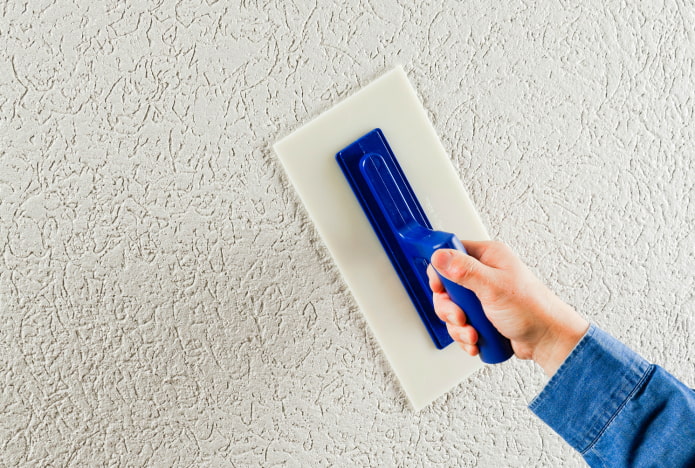
 10 practical tips for arranging a small kitchen in the country
10 practical tips for arranging a small kitchen in the country
 12 simple ideas for a small garden that will make it visually spacious
12 simple ideas for a small garden that will make it visually spacious

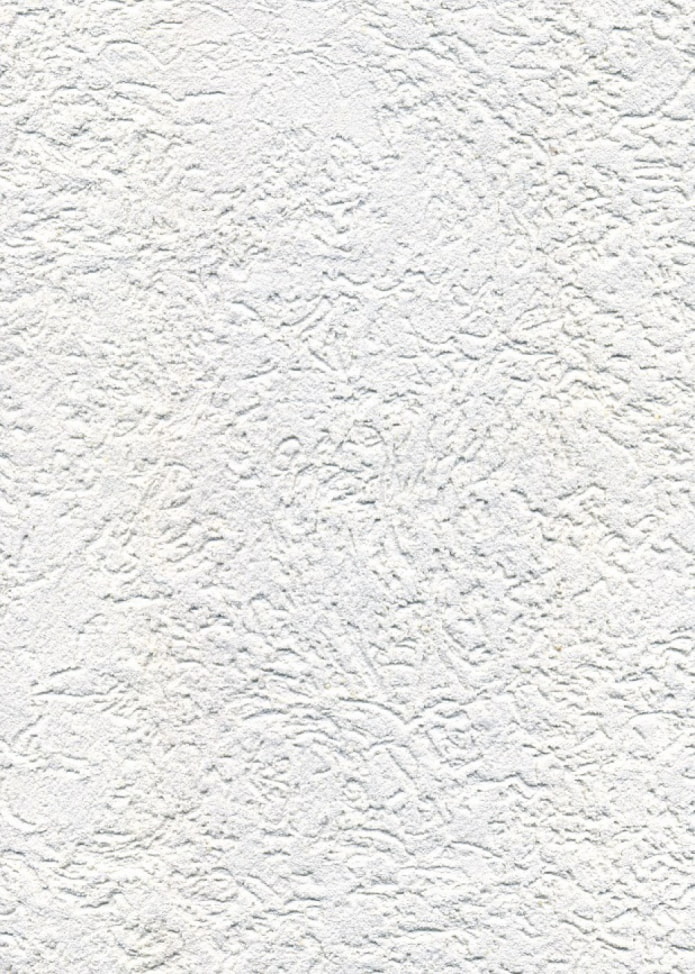
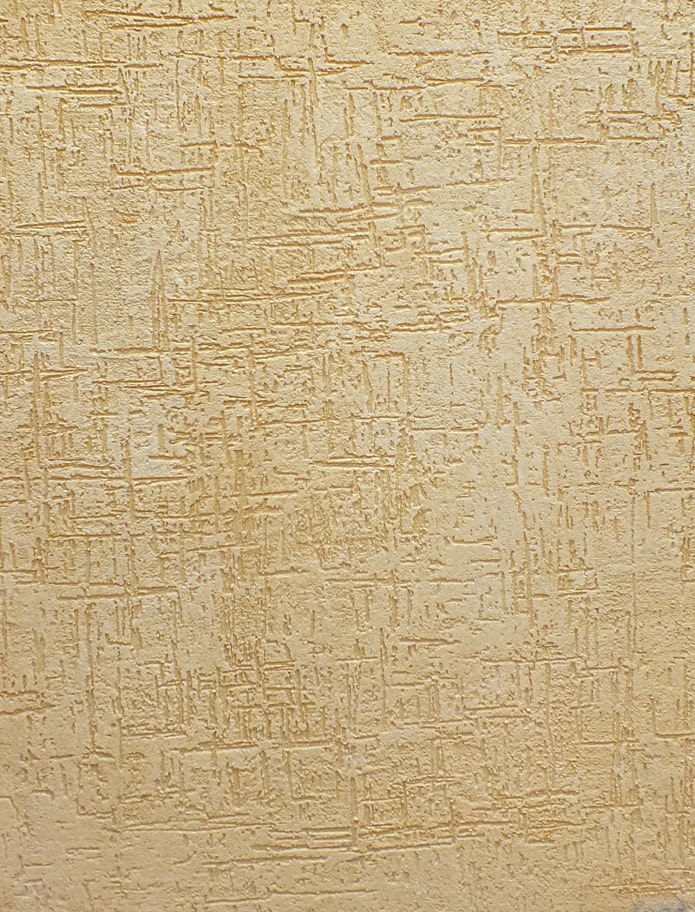
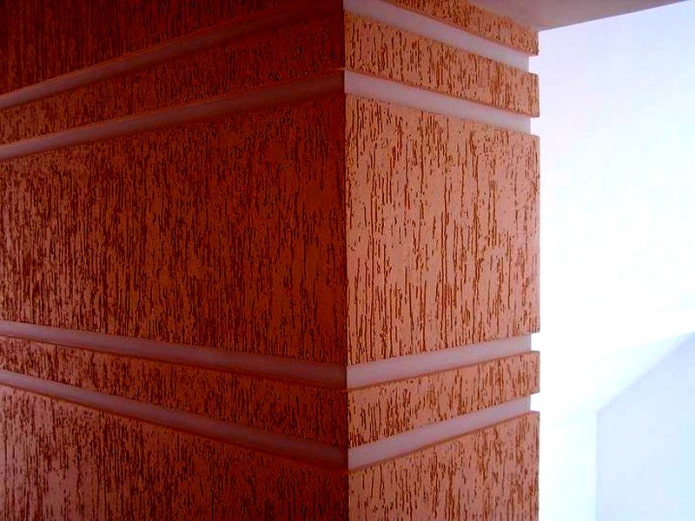
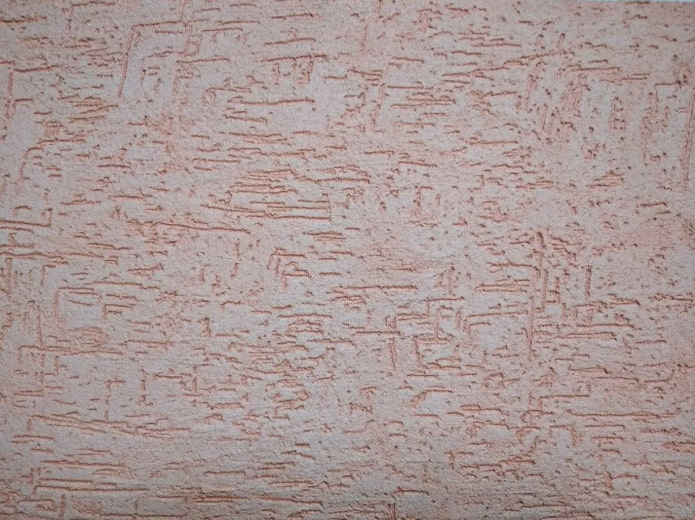
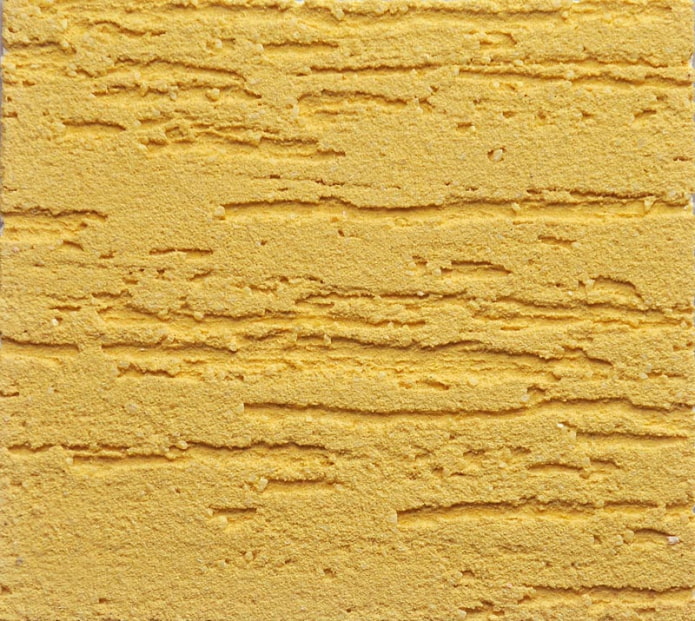
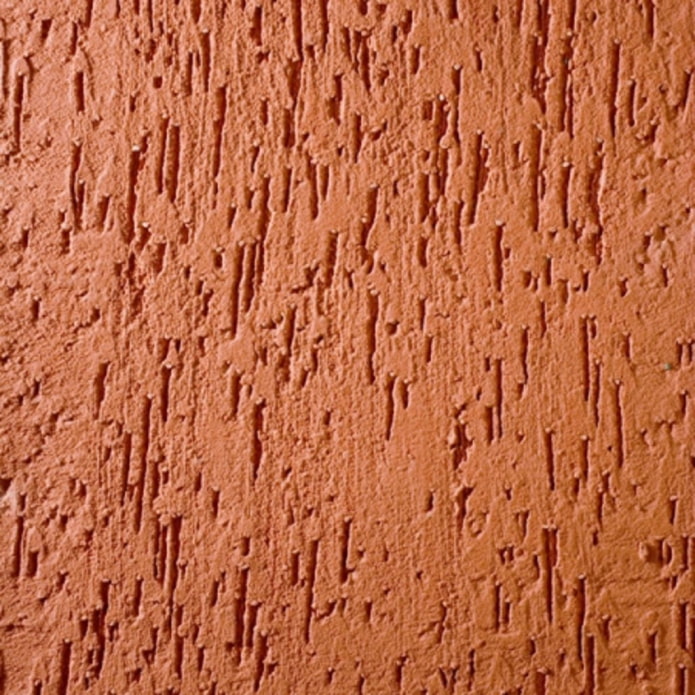
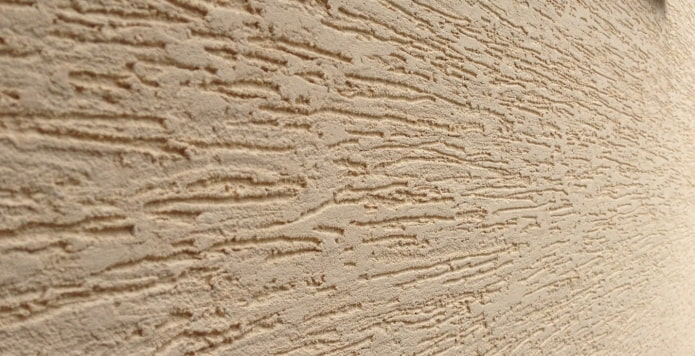

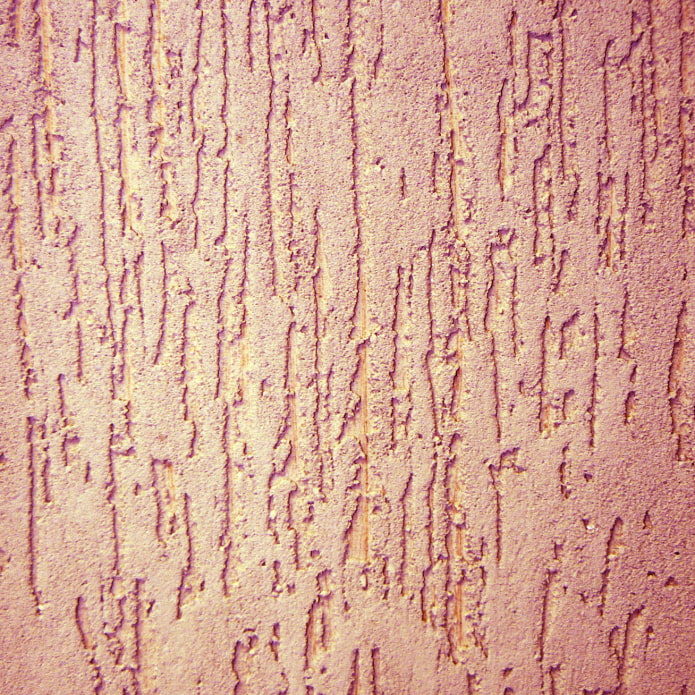

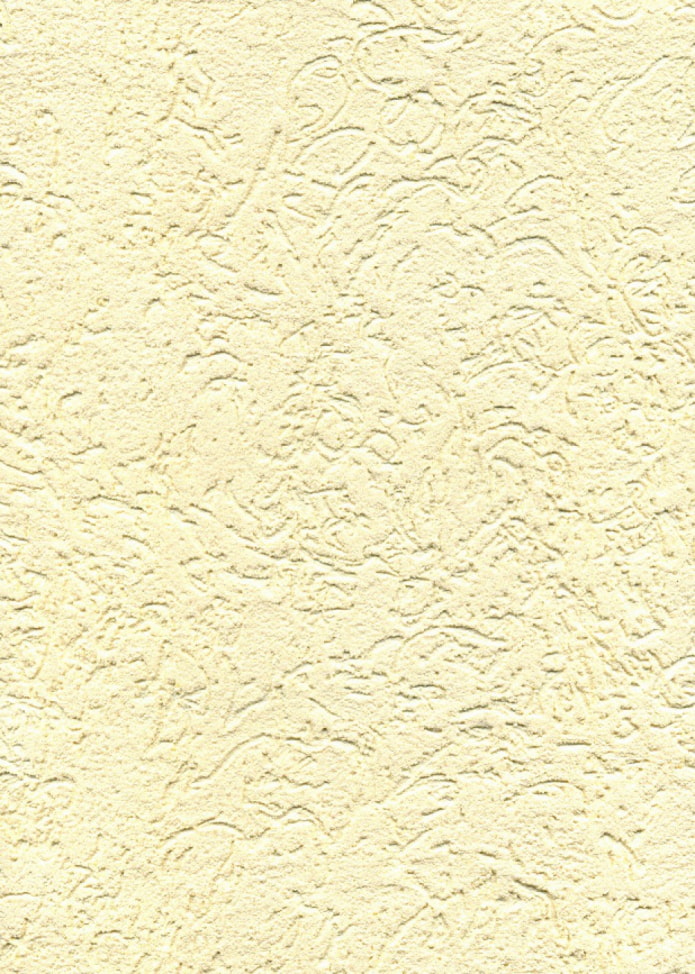
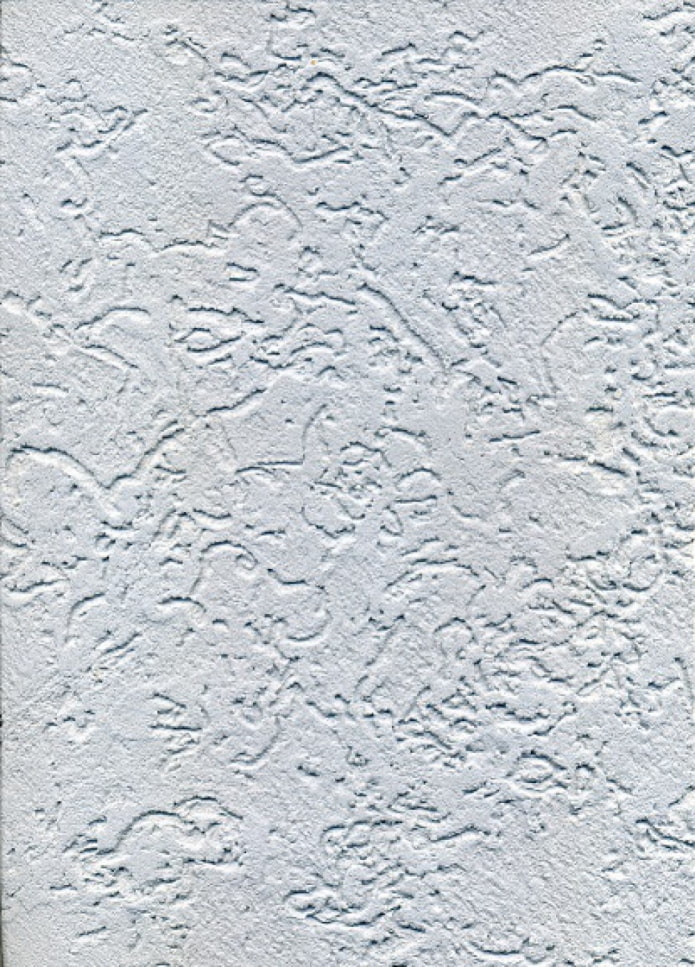
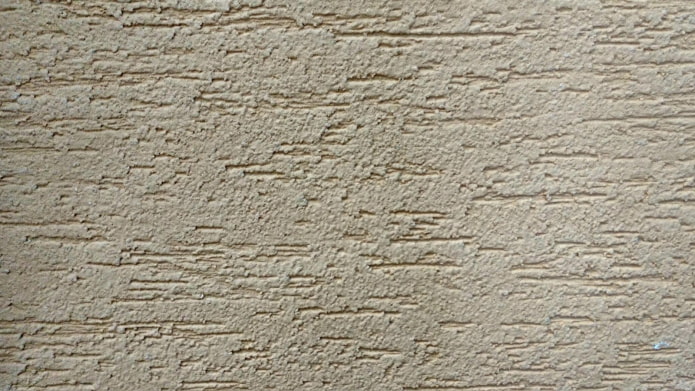
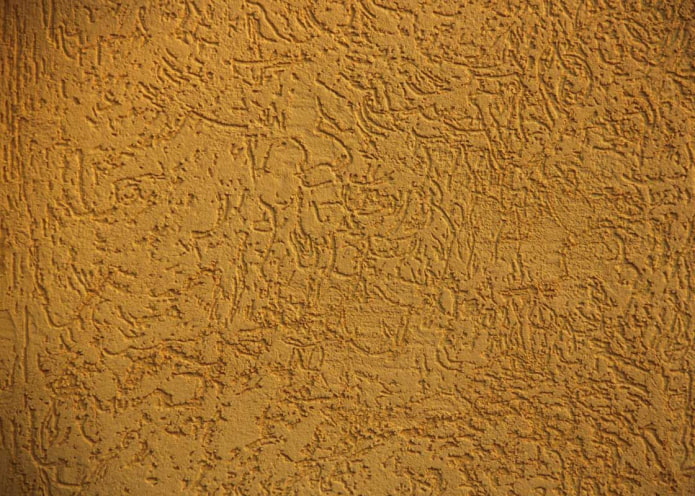
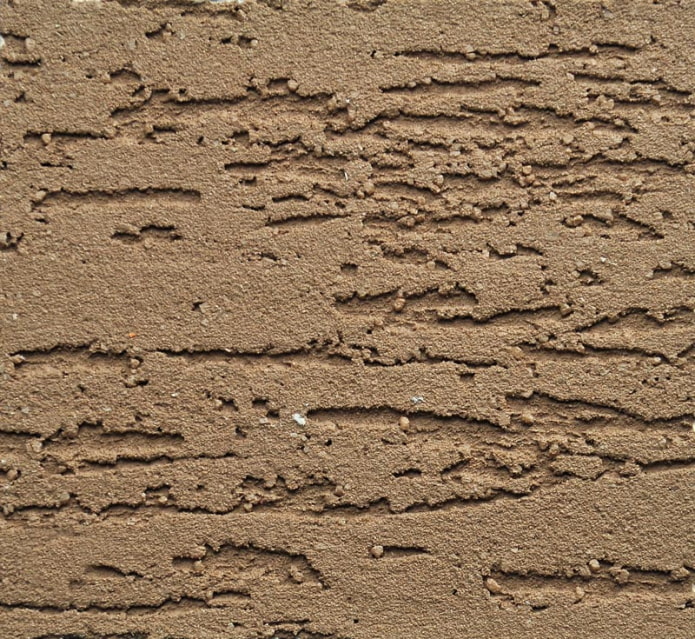

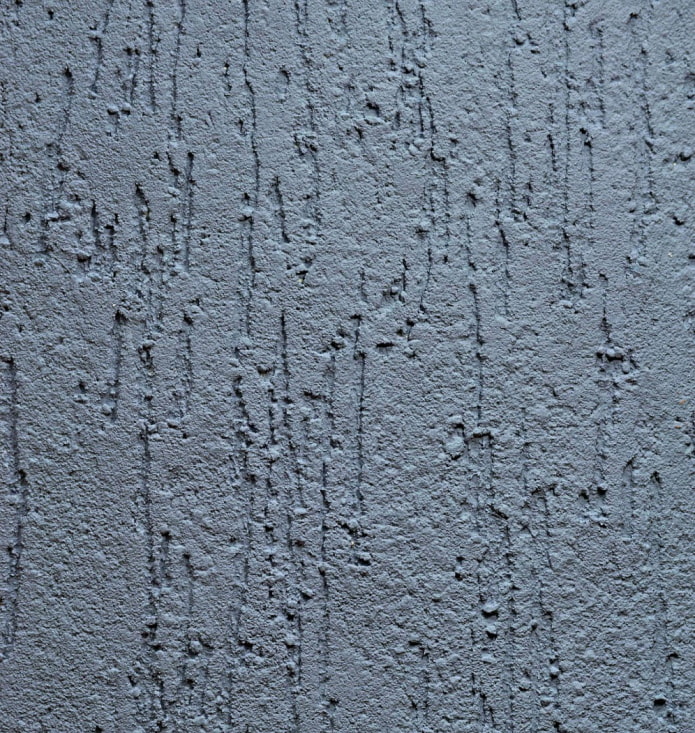
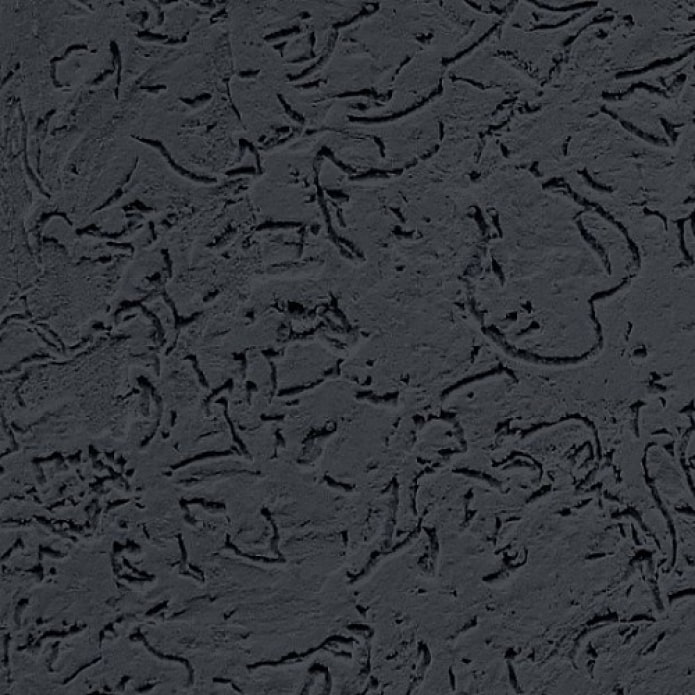
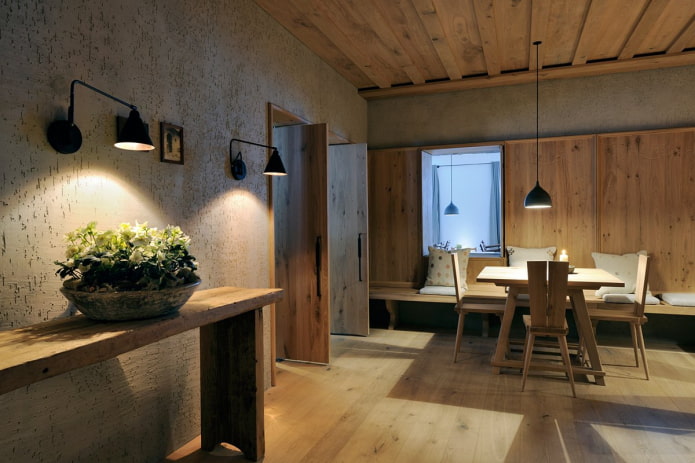
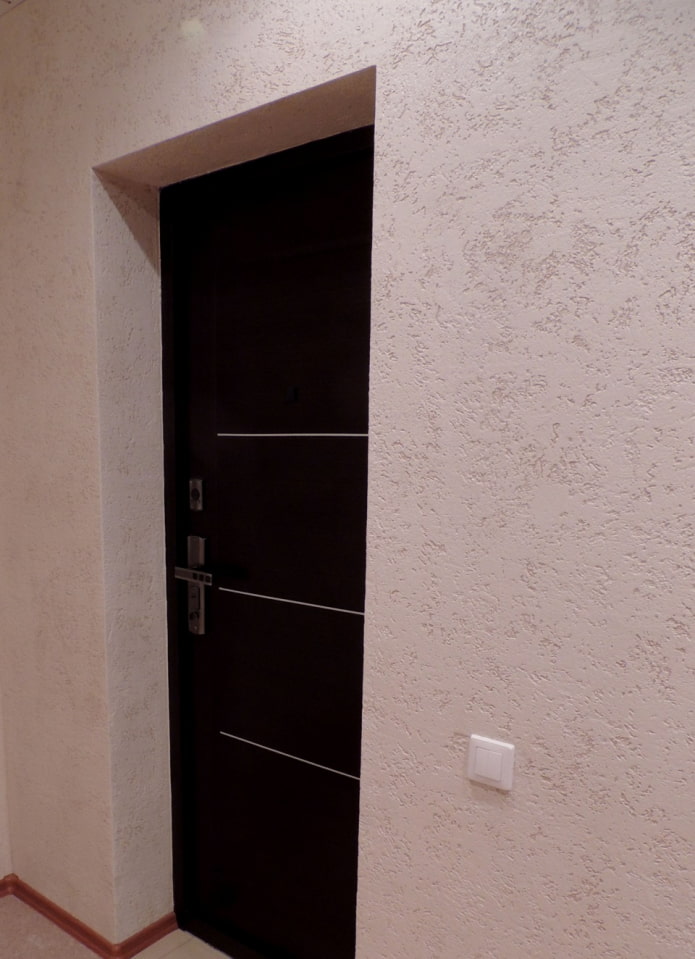
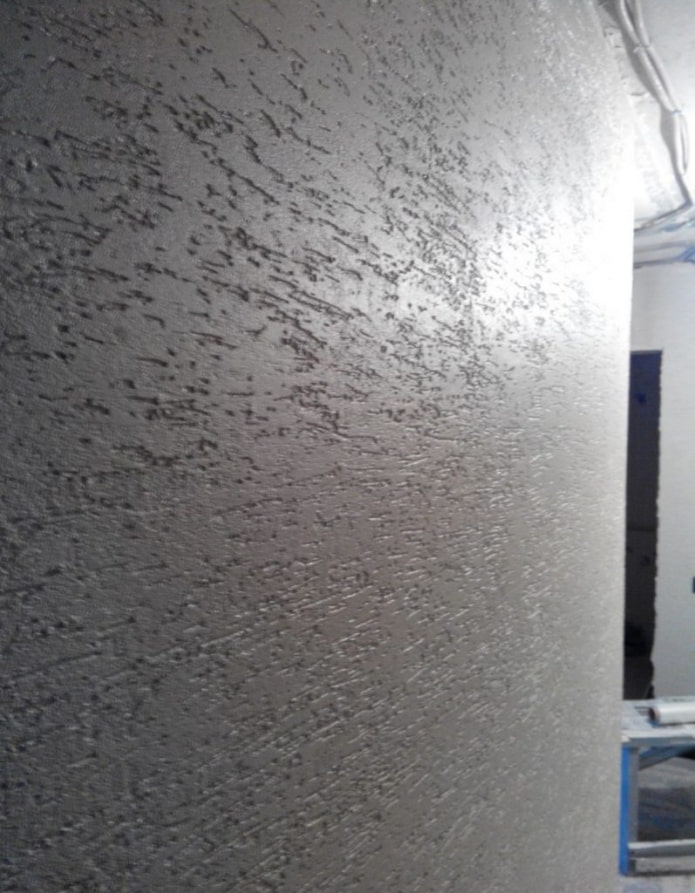

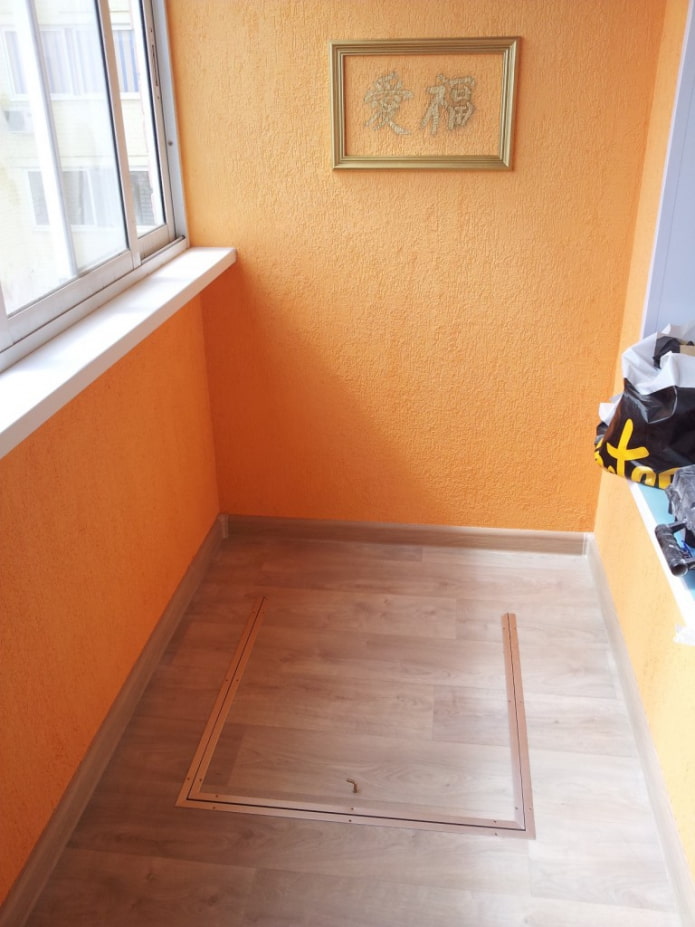

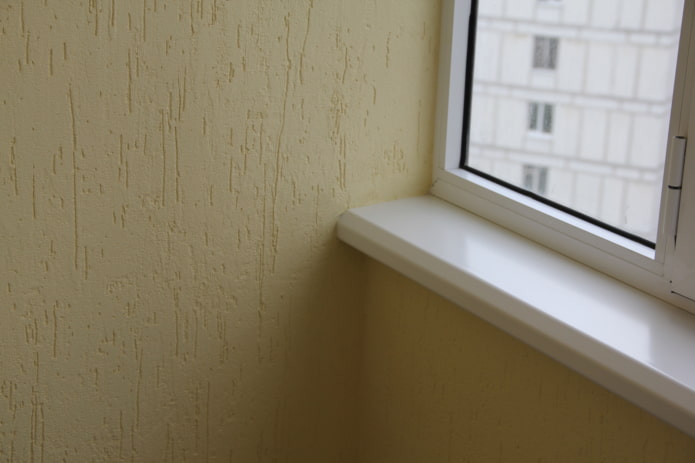

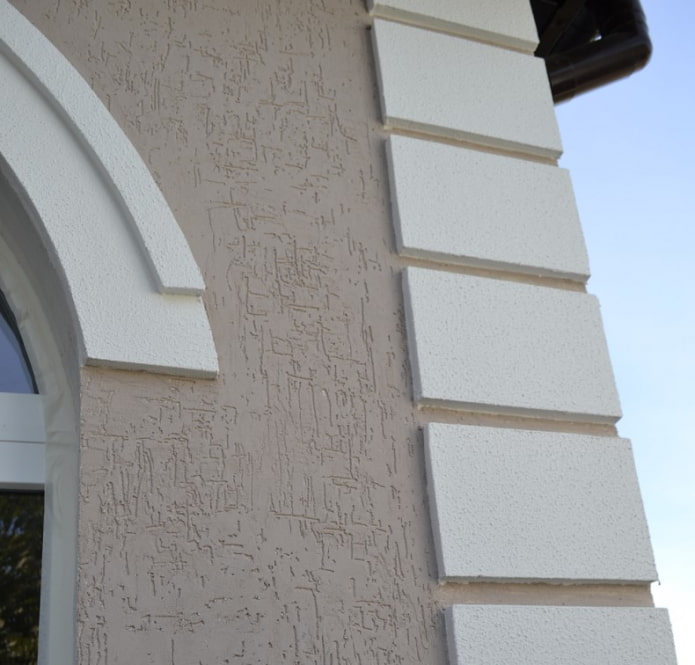
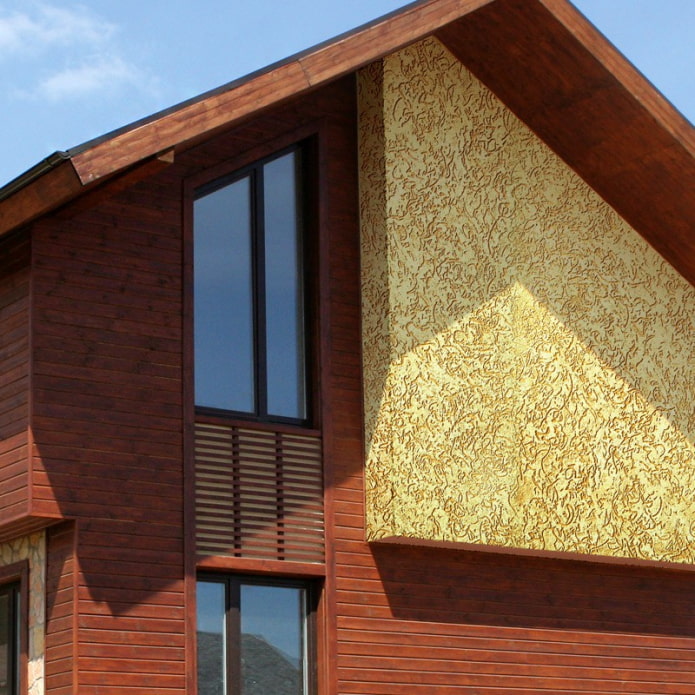
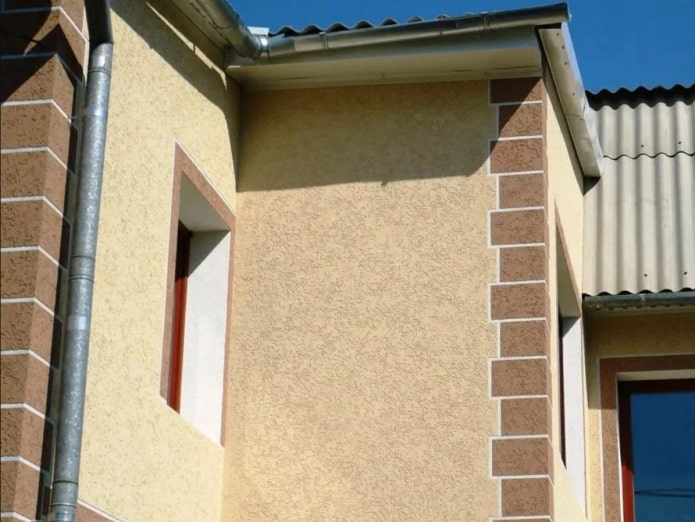
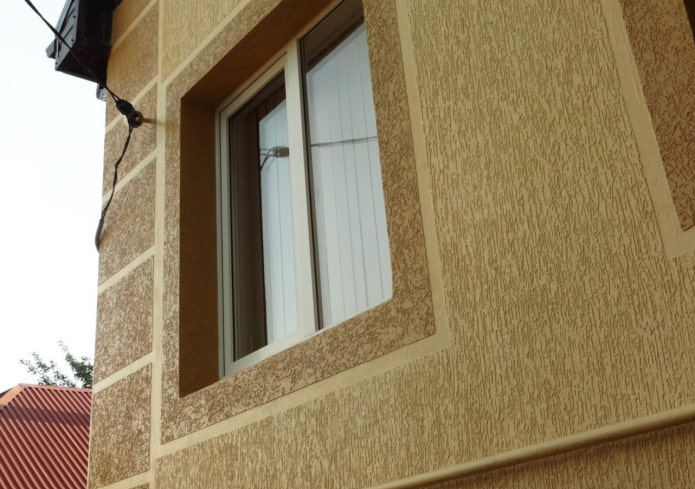
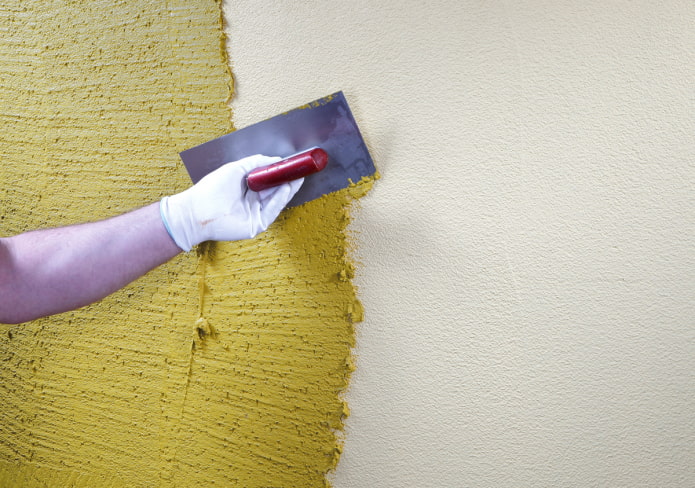
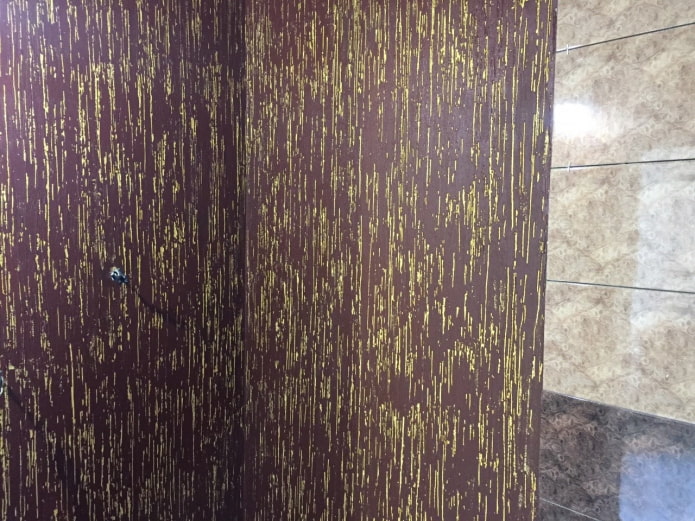
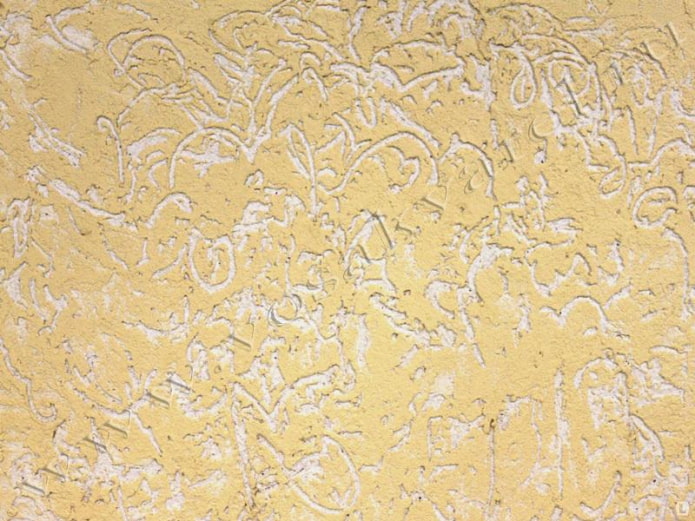
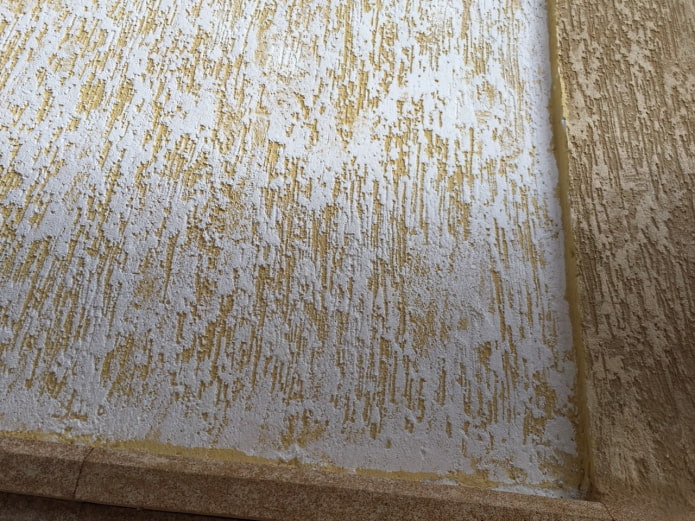

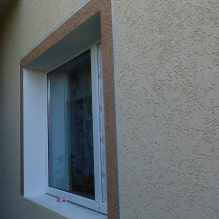
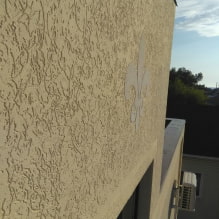
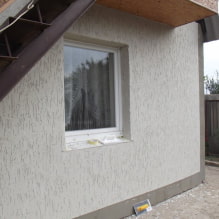
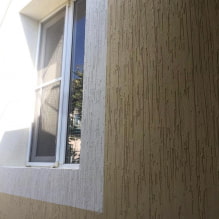
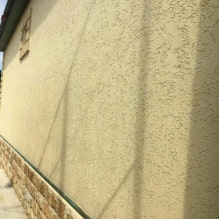
 What is better not to do it yourself during the repair?
What is better not to do it yourself during the repair? Bloated linoleum: how to fix it without disassembly
Bloated linoleum: how to fix it without disassembly The worst decisions in apartment renovation
The worst decisions in apartment renovation  Installation of ceiling tiles: choice of materials, preparation, order of work
Installation of ceiling tiles: choice of materials, preparation, order of work How to glue a ceiling plinth to a stretch ceiling?
How to glue a ceiling plinth to a stretch ceiling? Ceiling plinth for stretch ceiling: types, recommendations for selection
Ceiling plinth for stretch ceiling: types, recommendations for selection